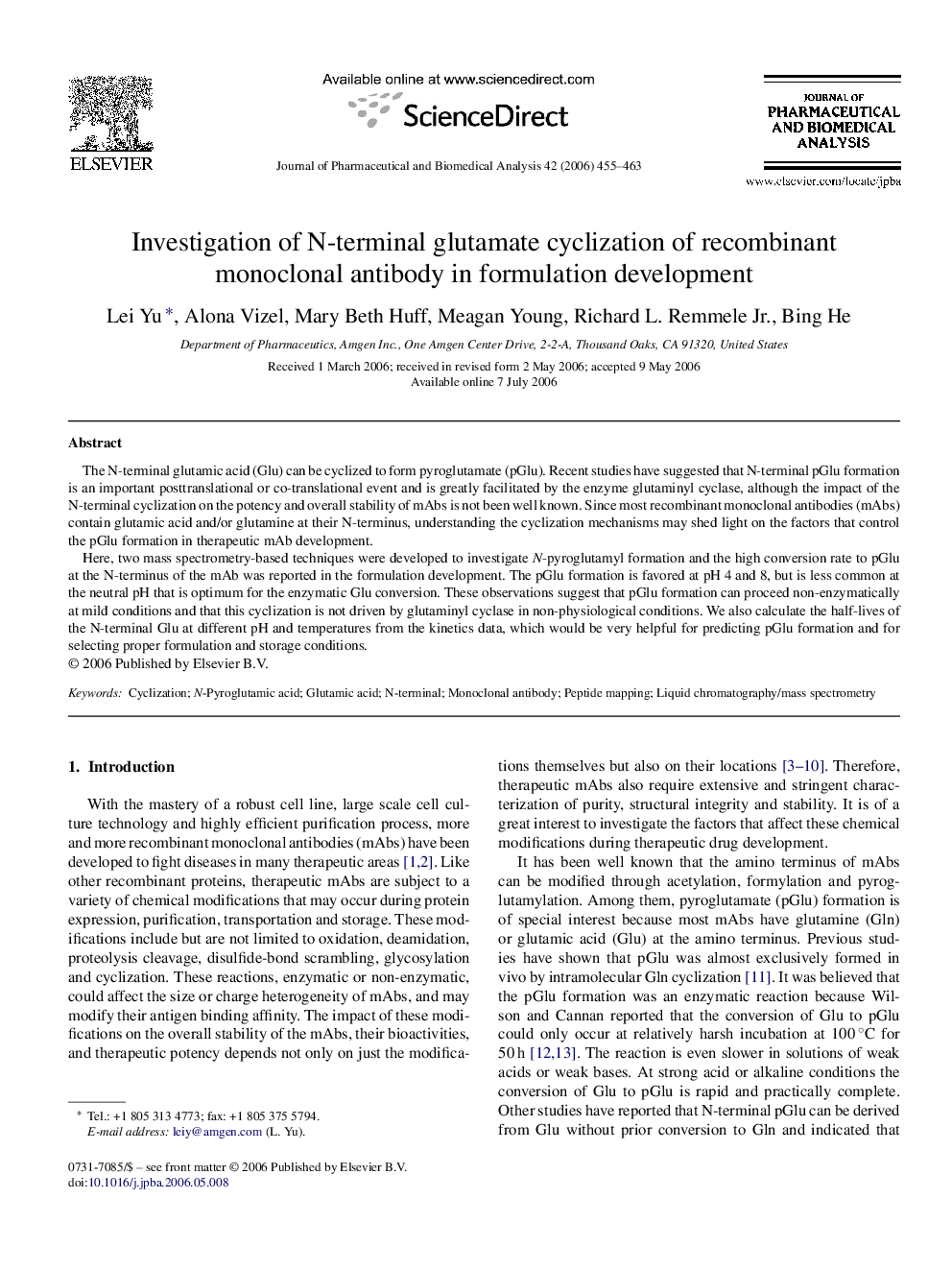| Article ID | Journal | Published Year | Pages | File Type |
|---|---|---|---|---|
| 1224783 | Journal of Pharmaceutical and Biomedical Analysis | 2006 | 9 Pages |
The N-terminal glutamic acid (Glu) can be cyclized to form pyroglutamate (pGlu). Recent studies have suggested that N-terminal pGlu formation is an important posttranslational or co-translational event and is greatly facilitated by the enzyme glutaminyl cyclase, although the impact of the N-terminal cyclization on the potency and overall stability of mAbs is not been well known. Since most recombinant monoclonal antibodies (mAbs) contain glutamic acid and/or glutamine at their N-terminus, understanding the cyclization mechanisms may shed light on the factors that control the pGlu formation in therapeutic mAb development.Here, two mass spectrometry-based techniques were developed to investigate N-pyroglutamyl formation and the high conversion rate to pGlu at the N-terminus of the mAb was reported in the formulation development. The pGlu formation is favored at pH 4 and 8, but is less common at the neutral pH that is optimum for the enzymatic Glu conversion. These observations suggest that pGlu formation can proceed non-enzymatically at mild conditions and that this cyclization is not driven by glutaminyl cyclase in non-physiological conditions. We also calculate the half-lives of the N-terminal Glu at different pH and temperatures from the kinetics data, which would be very helpful for predicting pGlu formation and for selecting proper formulation and storage conditions.
